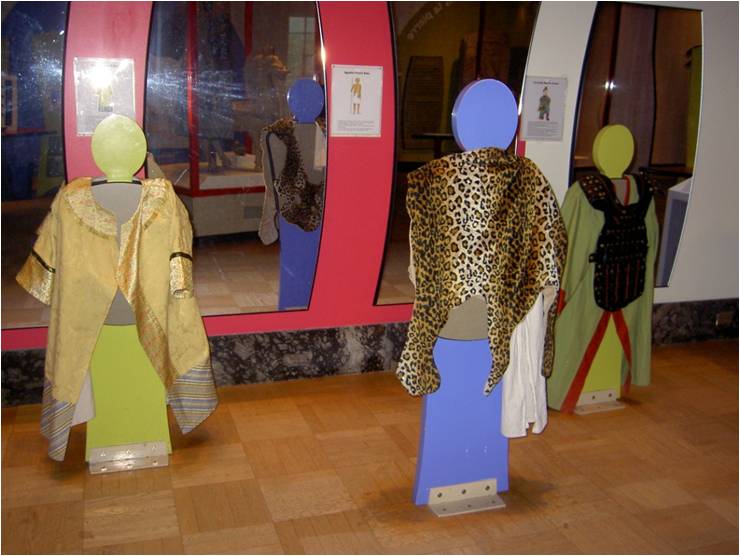Dealing with Dress-Up
26 November 2013 - 8:49pm
 This month’s Teaching the Past blog theme dealt with using imagination to teach history, and we heard from a range of perspectives, which I hope you have enjoyed. As a museum educator, I’m often facilitating imaginative play in the galleries where I teach, particularly in the Discovery Gallery at the Royal Ontario Museum. The “Try It On” section is a very popular part of the gallery, where visitors can try on helmets, a sixteenth century breast plate, a tunic, a medieval dress, an imperial Chinese court robe, a kimono, reproductions of the accoutrements of a bejewelled Ancient Egyptian. While I have seen first-hand the joy and excitement that dress-up can induce, I often wonder what kind of messages we are sending about people in the past when we ask students to dress up and “become” them. Often touted as a means to make the history “alive” (whatever that means), they seem to inevitably involve students becoming particular historical “characters.” These are usually stock characters that are examples of the historical experiences of the elite, which provide easier histories to talk about. No one, for instance is dressing up as a Chinese railroad worker from the Canadian Pacific Railway from the late 1800s.
This month’s Teaching the Past blog theme dealt with using imagination to teach history, and we heard from a range of perspectives, which I hope you have enjoyed. As a museum educator, I’m often facilitating imaginative play in the galleries where I teach, particularly in the Discovery Gallery at the Royal Ontario Museum. The “Try It On” section is a very popular part of the gallery, where visitors can try on helmets, a sixteenth century breast plate, a tunic, a medieval dress, an imperial Chinese court robe, a kimono, reproductions of the accoutrements of a bejewelled Ancient Egyptian. While I have seen first-hand the joy and excitement that dress-up can induce, I often wonder what kind of messages we are sending about people in the past when we ask students to dress up and “become” them. Often touted as a means to make the history “alive” (whatever that means), they seem to inevitably involve students becoming particular historical “characters.” These are usually stock characters that are examples of the historical experiences of the elite, which provide easier histories to talk about. No one, for instance is dressing up as a Chinese railroad worker from the Canadian Pacific Railway from the late 1800s.
Playing dress-up is more complicated than just playing. It can serve to locate particular cultures as always in the past and may provide ample opportunity for enforcing and maintaining cultural and racist stereotypes. One of these reasons is the emphasis on traditional dress, ignoring the complexity of diversity of clothing and what it means, at any time in history. The pedagogy of playing dress-up has its roots in the integrated arts programming of the 1930s at the museum, programming that was experiential, activity-based and usually resulted in a culminative pageant, such as the Hopi “Indian”project from the 1957-8 ROM Saturday Morning Club (see below)
Many museum-based pageants focused on dressing up as ancient civilizations, and First Nations cultures were considered part of that list. Dressing up as First Nations people, or to be more precise, a mythical idea of First Nations people, was common as an "enterprise" for classes during the activity-based curriculum changes of the 1930s. But it hasn’t died yet. Parents have often commented on how much their children enjoyed the dress-up and I have been repeatedly shocked when parents ask where the “Indian” costumes are. We do have a reproduction tepee in the gallery that serves as a story nook as well as a buffalo robe. The politics of dressing-up and role-playing are complicated and we miss out on an opportunity for critical reflection and important conversations with students and visitors when we dismiss the dress-up area as “just play.”
How do you deal with dress-up?
Top Photo: Author's Photo, Discovery Gallery
Bottom: Original found in Royal Ontario Museum Archives.
- Se connecter ou créer un compte pour soumettre des commentaires

